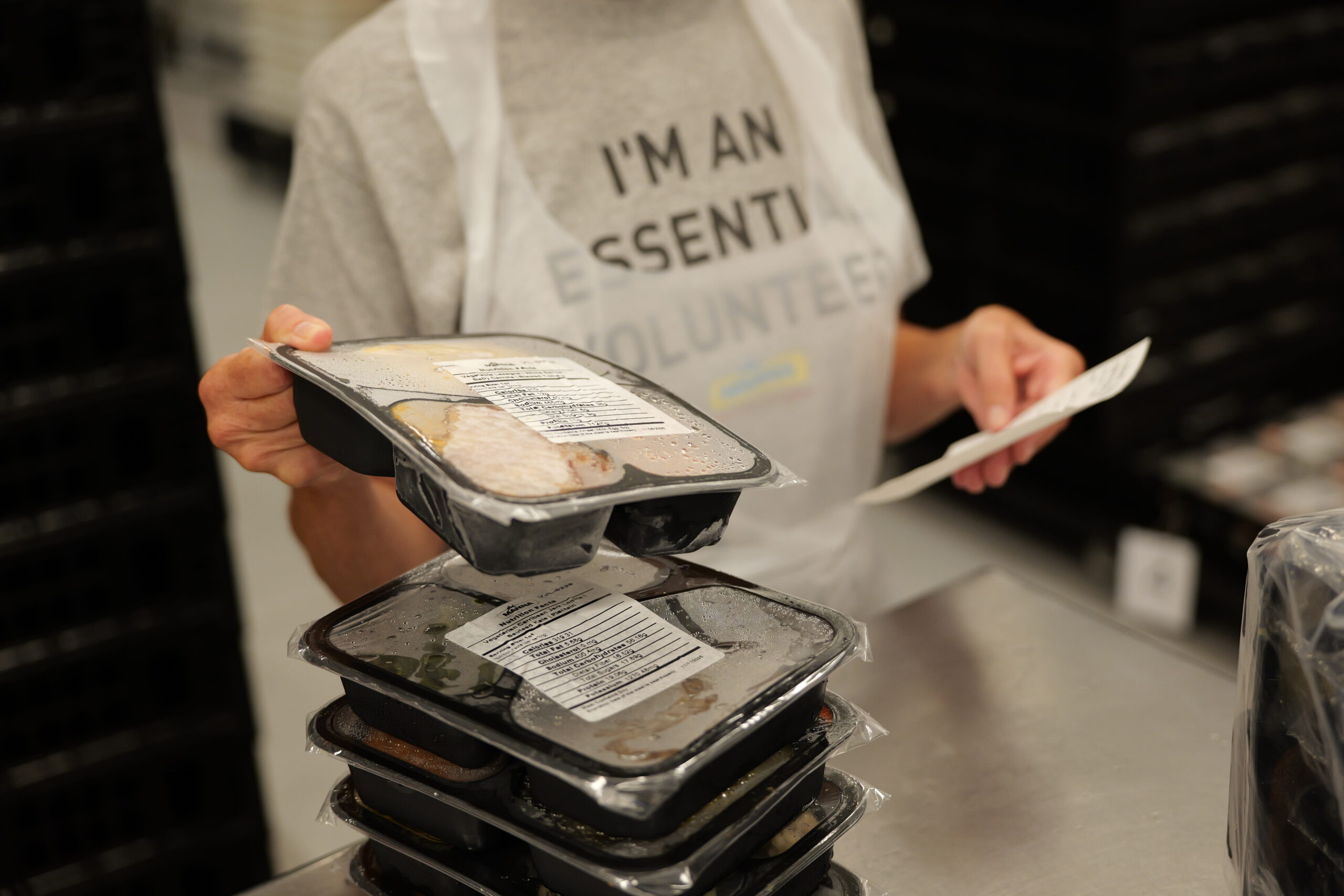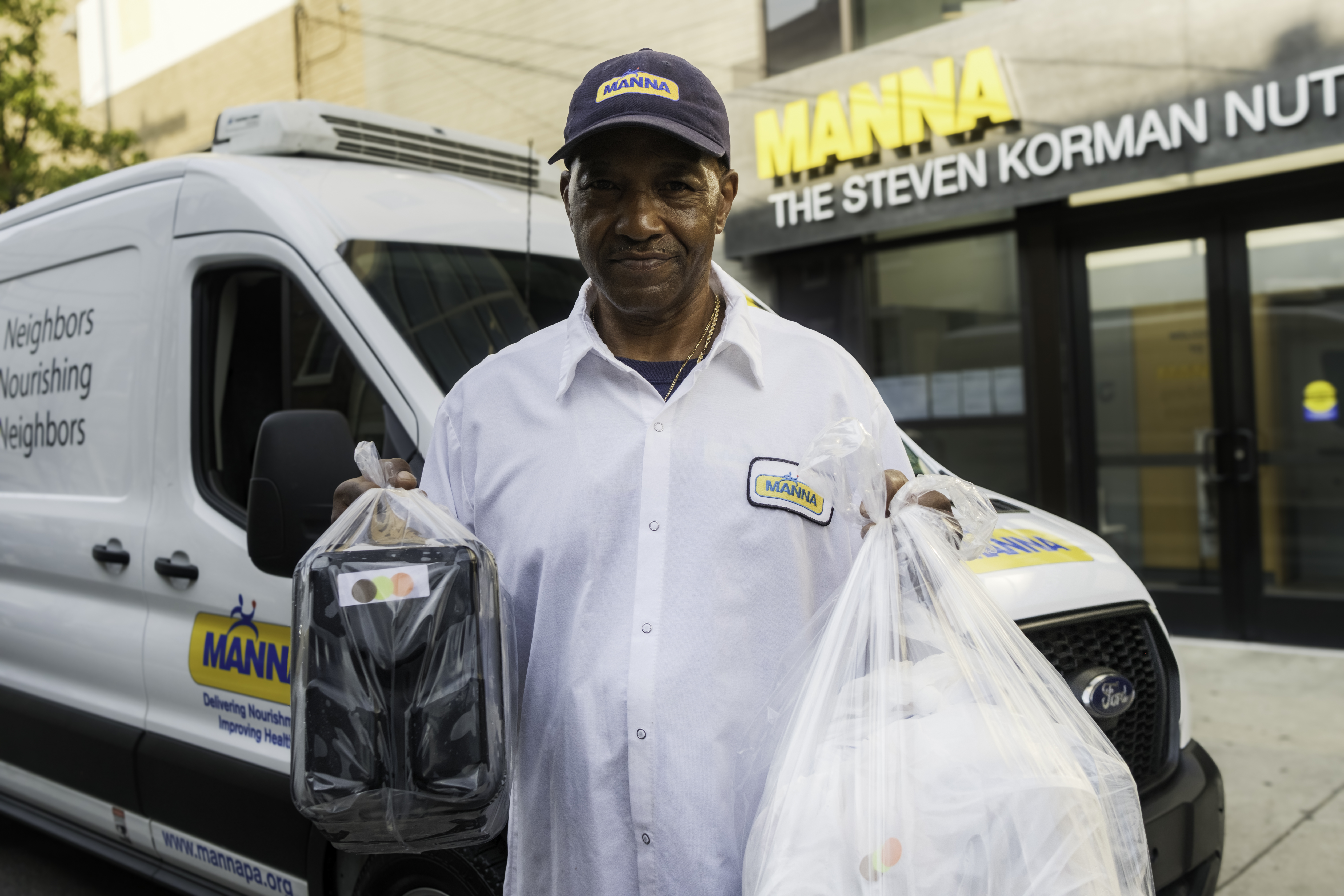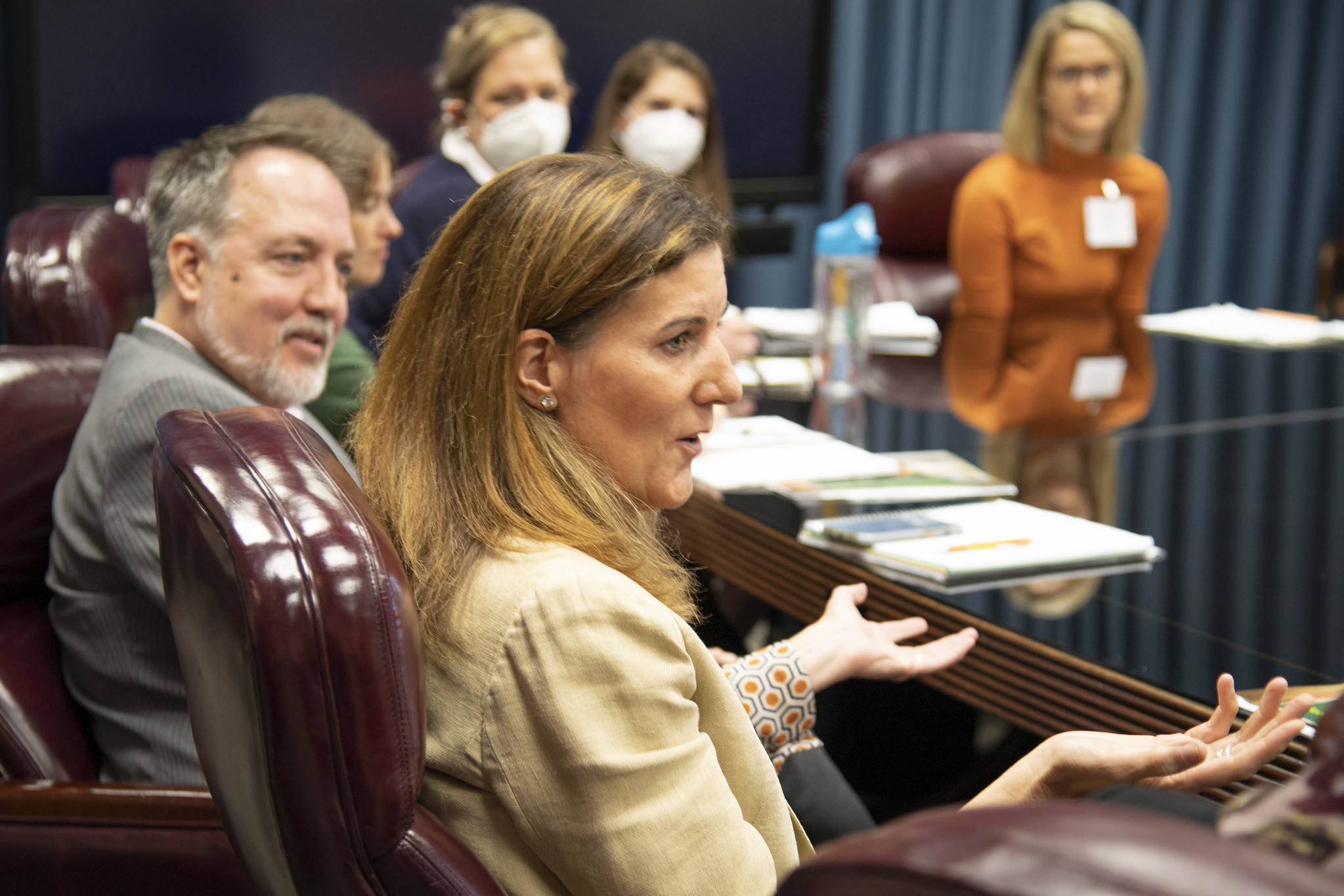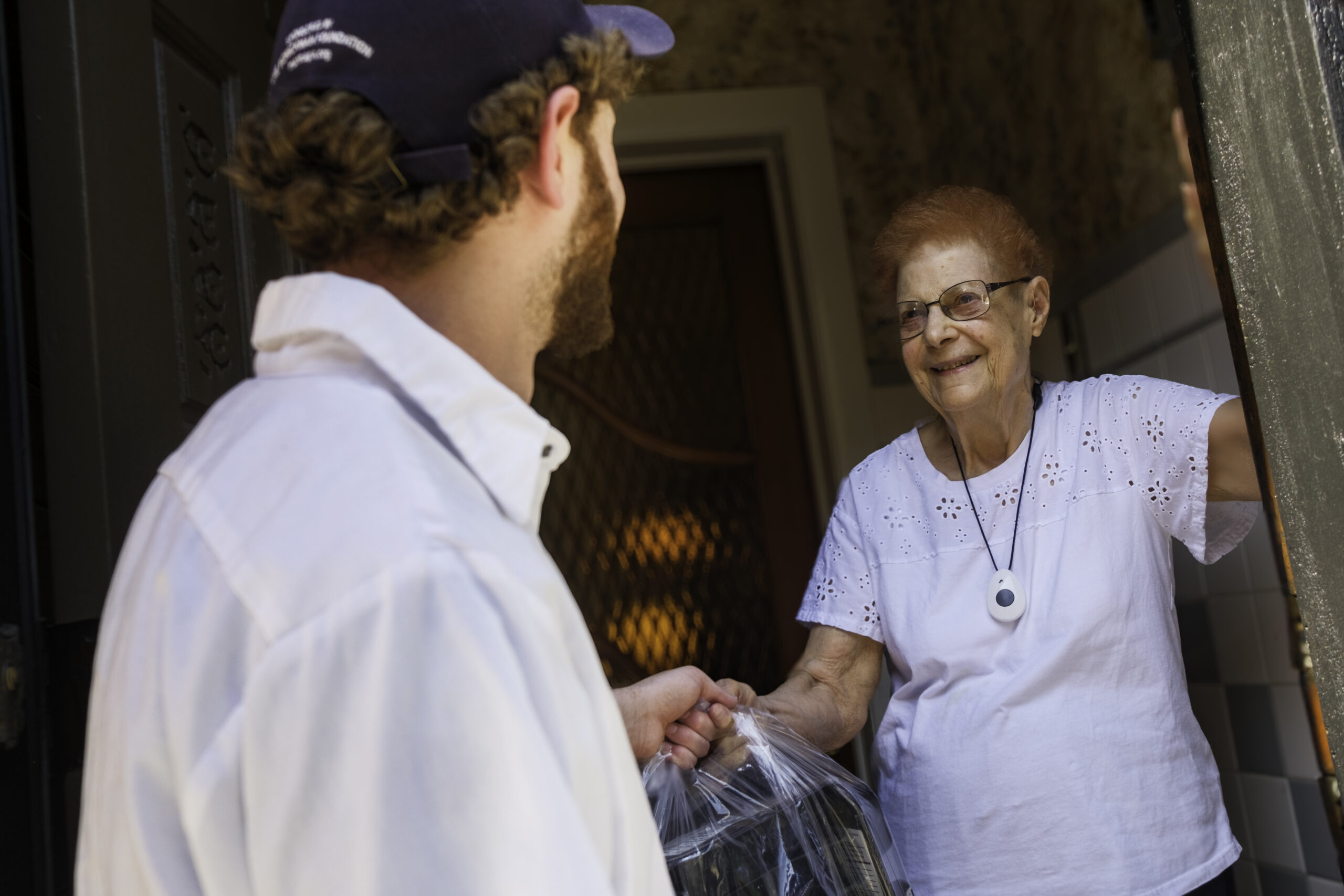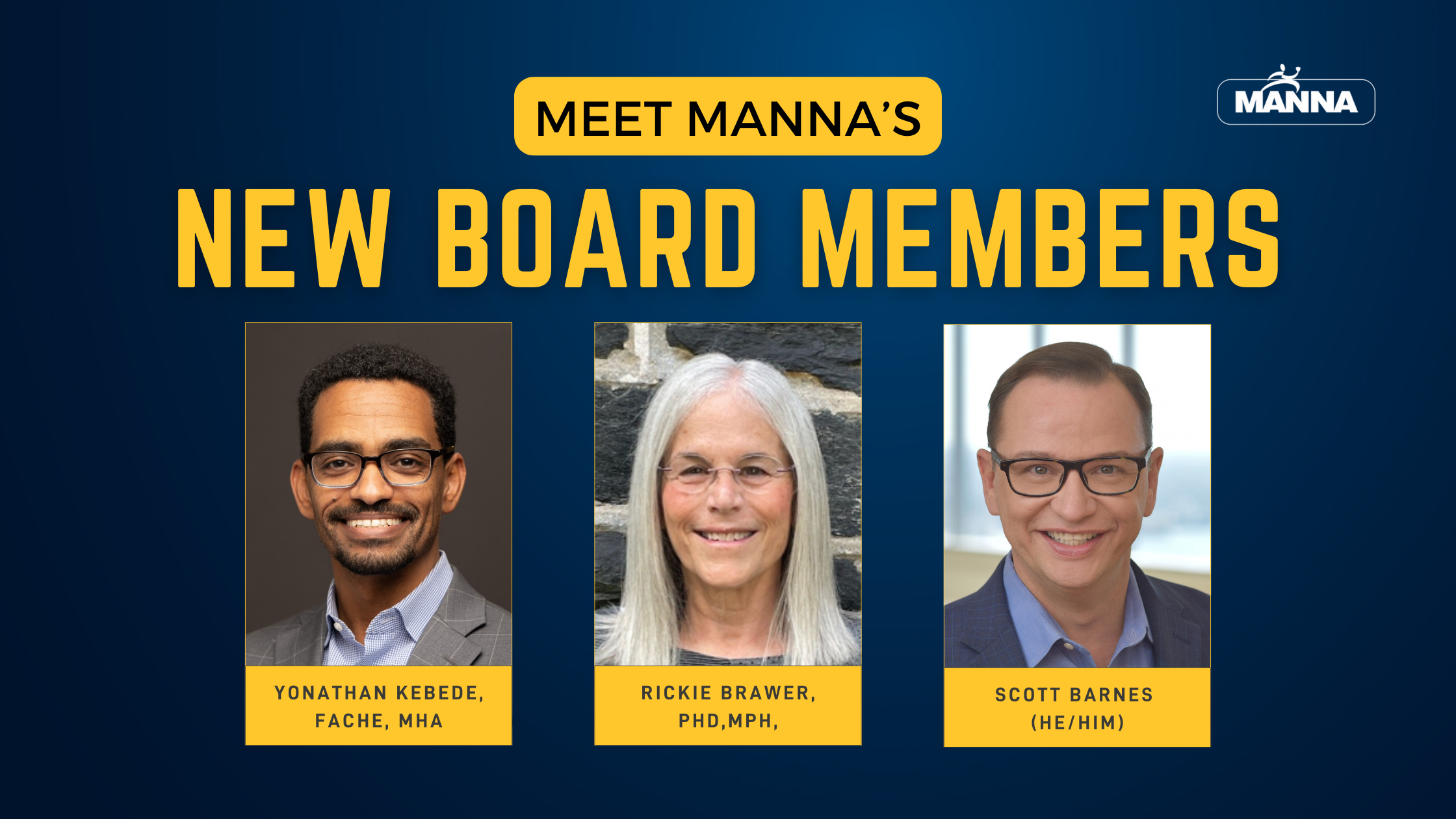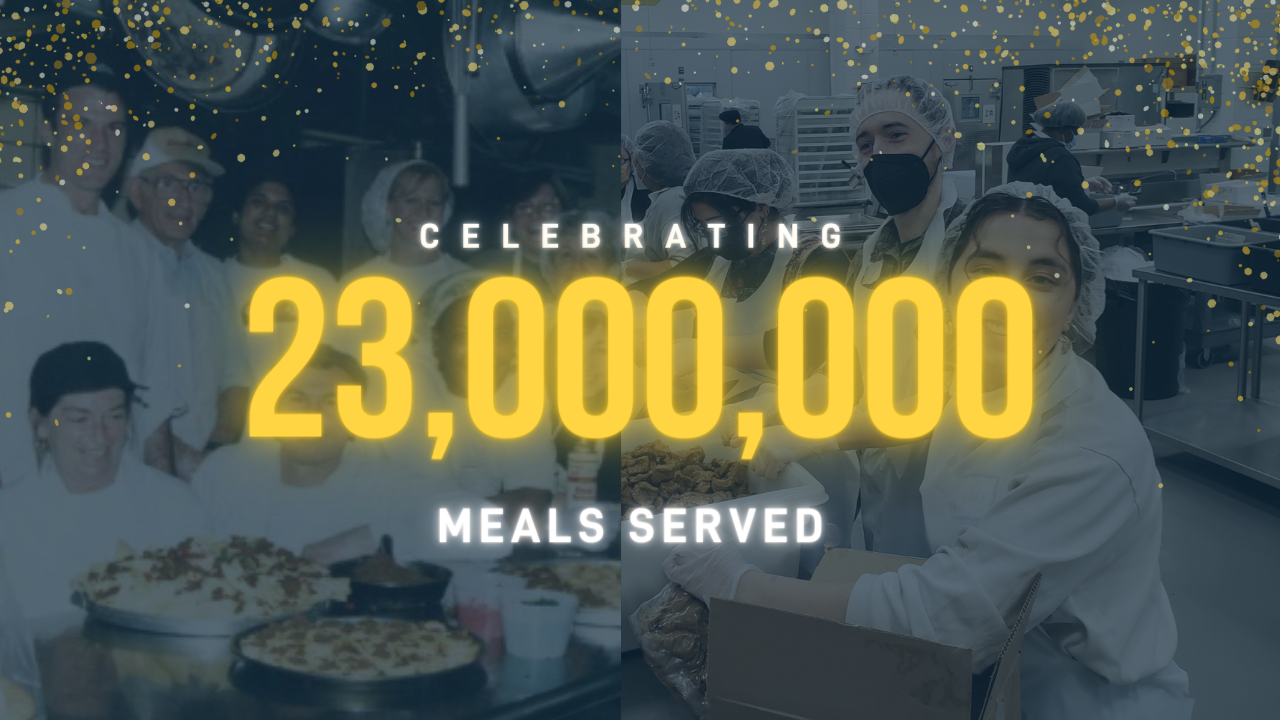Category: News
Measuring What Matters: How MANNA and HSX Are Using Data to Drive Better Health
New Study Links MANNA’s Medically Tailored Meals to Health Gains for Heart Failure Patients
Status of MANNA’s Federal Funding
Just-Published Research from MANNA Shows Medically Tailored Meals can Improve Health Outcomes for Individuals with Serious Illness
From Kitchen to Clinic: MANNA Highlights Role of Nutrition in Healthcare for Medical Students
It’s no secret that nutrition can directly impact health outcomes, and it’s well documented that when nutrition is poor, those outcomes can be devastating. One study found that nearly half of the deaths related to heart disease, stroke and type 2 diabetes are associated with suboptimal eating habits (NIH).
MANNA’s mission is to help treat those with serious disease through nutrition. Its medically tailored meal (MTM) intervention is evidence-based and associated with reduced length of hospital stays, decreased hospital readmissions, and improved malnutrition risk (Journal of Primary Care & Community Health).
If proper nutrition can have such a tangible impact on positive health outcomes, then physicians need to know who to turn to for the best nutrition care and resources available to patients in their community. Medical school training is already jam-packed, and physicians don’t have the time or expertise to advise patients on their dietary needs. MANNA’s medically tailored meal program, which includes nutrition counseling provided by registered dietitians, exists to provide community members with the resources they need to maintain their nutritional status while managing their medical needs.
To help future physicians understand the impact of MTM programs, MANNA’s research arm, the MANNA Institute, hires medical fellows each academic year for an applied research experience. The Reid B. Reames Fellowship enables medical students to work on research projects that develop the body of evidence for “food as medicine.” Fellows study topics such as how MANNA’s MTM program affects malnutrition risk and the impacts of MTMs on health among heart failure patients. While some of the students begin their journey at MANNA unaware of the organization’s nutrition therapy mission, they quickly come to experience its role as a change agent in patient care.
“I needed volunteer hours, and my friend suggested that I check out MANNA,” said Kaitlyn Bartholomew, a 2022-2023 fellow. “I figured this would be like volunteering in any other kitchen, but when I watched the volunteer orientation video, I realized that MANNA’s work actually aligned perfectly with my interest in nutrition as a med student. I found out about the MANNA Institute and emailed the team to get involved with research.”
This is a common theme when people visit MANNA’s kitchen – there is a sense of hope, learning that an organization is tackling serious health issues through food. Strangers stand side-by-side in the kitchen, preparing and packing meals together in an effort to not only feed people, but heal them.
“I always had a great time volunteering during my undergrad at MANNA,” said 2023-2024 fellow Jeffrey Zhou. “But I saw my time there as helping provide folks who needed it with nutritious food. Once I started working as a fellow at the Institute, I saw the bigger picture of how incredibly broadly nutrition can affect people, and how this work is not just providing people with good food, but with proven treatments, [delivered] right to their door.”
As these young professionals advance in their careers, they will take the lessons they’ve learned from the MANNA Institute with them.
“Since my time at MANNA, I am now very thorough when I ask patients about their diets, where they live, if they have access to good food and transportation to get to the grocery store,” said Zhou. “I always knew that nutrition is a huge factor for your overall health, and I have personally always had an interest in nutrition and food as a way to stay healthy. But now, I see nutrition through the food-as-medicine lens, and I plan to take this with me throughout the rest of my career to ensure I treat patients to the best of my ability.”
The Reid B. Reames Fellowship program is in its third year at MANNA. So far, six soon-to-be doctors have experienced the “aha” moment that food truly is medicine.
“As with everything we do at MANNA, our goal for the Fellowship program is to enhance awareness, in this case among the next generation of physicians and care providers, of the role of diet in nutrition-related disease,” said Jule Anne Henstenburg, Director of The MANNA Institute.
To learn more about the MANNA Institute’s Reid B. Reames Fellowship program, visit https://mannapa.org/mannainstitute/reid-b-reames-fellowship/.
MANNA Welcomes Three New Members to its Board of Directors
MANNA Celebrates Extraordinary Milestone of 23 Million Meals Served to Neighbors in Need
American Heart Month is here
Did you know that February is American Heart Month? The month of February is dedicated to raising awareness about heart disease and educating the population on ways to prevent it. Unfortunately, heart disease continues to be one of the leading causes of death in America prematurely ending the lives of 1 in 4 people. Although there are many risk factors, a healthy diet and exercise continues to be the best defense.

This infographic was created by The American Recall Center. Learn more here.
At MANNA we make every effort to ensure that our meals are heart healthy, following the nutrition guidelines of the American Heart Association. In each meal delivery, we send our clients fresh fruits, vegetables and whole grains. Our soups are made with low sodium stocks and they are flavored with spices, like garlic and sage, to ensure that they are heart healthy and flavorful. In addition, to help our clients control their cholesterol levels, we limit red meat in our meals to once per week and we send low-fat dairy alternatives.
All of the MANNA clients are following a heart healthy diet, below are some tips from our Registered Dietitian on how you can do the same!
Heart Healthy Tips provided by Alura Costa, RD at MANNA
- Incorporate fresh fruits and vegetables, whole grains and low-fat dairy into your diet daily. Think green!
- Be careful with canned soups which contain a lot of sodium. Purchase a low sodium soup option or make your own soup utilizing low sodium broth instead. Try adding different types of whole grains like barley or quinoa…yum!
- Use spices and flavorful herbs to season foods. Utilizing salt alternatives are key to reducing sodium intake. Basil and cayenne are some of my favorites! MORE
- When using canned vegetables, make sure to rinse any excess sodium off by running the vegetables under cold water. This trick is simple and helpful.
- Opt for sauce on the side when dining out. Sauces at restaurants are usually high in sodium. Also, some restaurants indicate which meals are low in sodium by placing a small heart icon next to menu items.
![]()
Take Action
- Go red! Celebrate National Wear Red Day with MANNA and help raise awareness about women and heart disease on February 6th. More: goredforwomen.org
- Share American Heart Month Tweets via your twitter account.
- Get screened and encourage others to do the same with this e-card generated by Health Finder.
- Make a vow to cook more heart healthy meals – recipes.

Making Realistic Health Resolutions
Each year we approach the New Year with excitement and vigor, vowing to challenge ourselves in an area where we think changes need to be made. Out with the old and in with the new! Losing weight and eating healthier tops many people’s resolution lists. Although our intentions are good with a goal of adapting healthier habits, sticking with these goals is not always easy because we tend to set unrealistic expectations for ourselves. We end up making too many changes at once and deprive ourselves of the foods we love which is both unenjoyable and unsustainable.
This year, start small and make just a few realistic changes that you know you can maintain. Below are some helpful tips from MANNA’s Registered Dietitians on becoming a healthier you.
5-A-Day Challenge
Eat five servings of fruits and vegetables every day! Getting the recommended servings of fruits and veggies daily helps to provide your body with the vitamins, minerals and fiber it needs to stay healthy. It is also a great way to help you to maintain or lose weight. Try to keep your fruit in a bowl on your kitchen table so that you will be more likely to eat them. Make it a point to fill half your plate at every meal with fruits or vegetables. At least once a week, skip the meat and try a new vegetarian recipe for dinner. Keep fresh fruits or cut-up vegetables at your desk for a healthy, mid-day snack.
Avoid Empty Calories
Try to avoid empty calories which are calories from solid fats and added sugars that contain few or no nutrients.
- Cakes, cookies, pastries, ice cream and donuts
- Sodas, energy drinks and fruit drinks
- Pizza, cheese, sausages, fatty meats, butter and stick margarine
Get Physical
The goal is to get 30 minutes of physical activity every day. A variety of activities can count towards physical activity including: walking, dancing, gardening, hiking, swimming, household chores, games and sports. You don’t have to do the entire 30 minutes at once, you can break it up into 10 minutes intervals. Try getting off the bus stop a few blocks early and walking ten minutes to work or an appointment. At the end of the day all of your activities add up!
Keep Track
Nothing is better to keep you motivated than seeing the results of your hard work each week. The USDA has created an easy, FREE tool called SuperTracker. SuperTracker allows you to keep track of your progress. You can look up nutrition information for over 8,000 foods, keep a log of the foods you are eating and your daily physical activity, get weight management guidance and receive support from your own virtual coach to help you achieve your health goals. Go to www.supertracker.usda.gov to personalize your experience and get a plan tailored for you!
